I remember when I was still in primary school, cheering excitedly as I watched the cool lions prance around on the large stage, bolstered by the jubilant clangs of the cymbals and rhythmic beating of the large drums.
Lion dance performances always brought a unique celebratory atmosphere that signalled— Chinese New Year was officially here.
However, when a lion dance TikTok suddenly popped onto my FYP ten years later, I belatedly realised I haven’t been seeing as many lion dance performances in my area as compared to the past! Has the tradition of lion dance slowly faded over the years, unbeknownst to most of us?
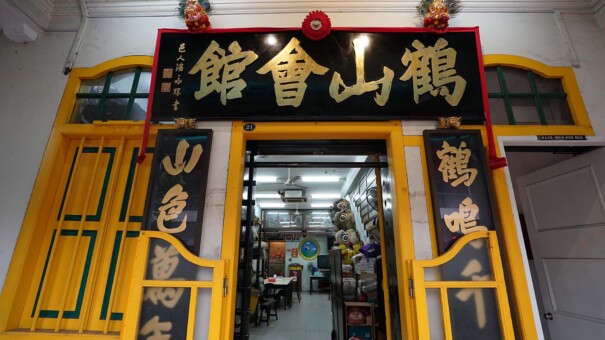
The Troupe’s History
To answer my question, I went behind the scenes at the Hok San Association Lion Dance Troupe, which is dedicated to the Traditional Hok San Style of Lion Dance.
As the oldest lion dance troupe in Singapore, their unique and traditional style distinguishes them from the more contemporary troupes, and they aim to preserve the art of lion dance in its most original form.
In the shophouse, the Hok San Association’s rich history of over a century is proudly displayed on its walls. Names and pictures of its contributors are displayed in appreciation for supporting the association, and photos of its past performances, many of them in black and white, are a testament to its history.
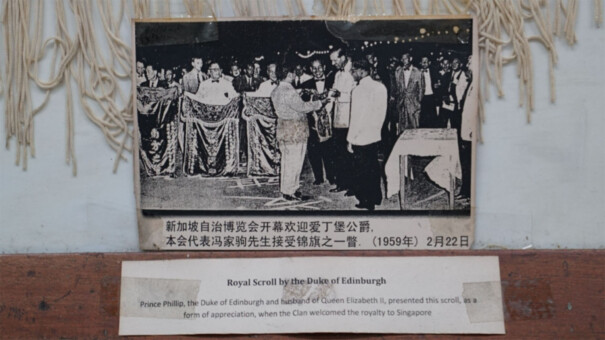
Meeting the Members
On the day of my visit, I met Keith (16) and Jordan (18), two troupe members responsible for the lion’s head and tail, respectively. What amazed me was that one of the coaches instructing them was in his sixties, yet he could demonstrate the moves and high kicks with agility!
As they practised, several other experienced coaches were guiding them, too — while other members synchronised by playing the drums and the cymbals.
Did you know? While the lion appears to be moving according to the beats and rhythm, the supporting percussion must adapt and move according to the lion’s moves if anything happens. It was indeed an excellent display and test of their coordination and teamwork.
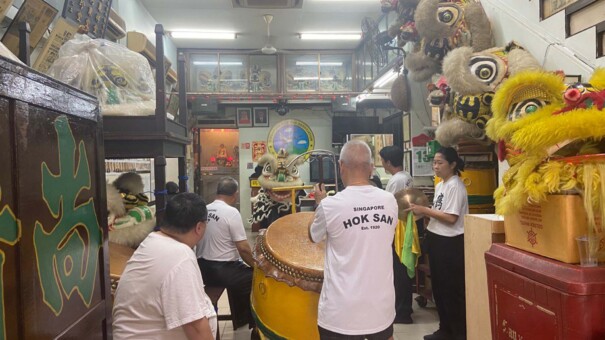
When they were taking a break, I also noticed that Keith suddenly switched to Cantonese to communicate better with his elders. Little efforts like this, bridging the generation gap, can help everyone in the performance team be more in sync with each other and function as one team.
Of course, all this also cannot be achieved without hours and hours of practice and hard work, bringing to mind the Chinese phrase “台上一分钟 台下十年功“. (One minute on stage requires 10 years of practice off stage)
Training Sessions
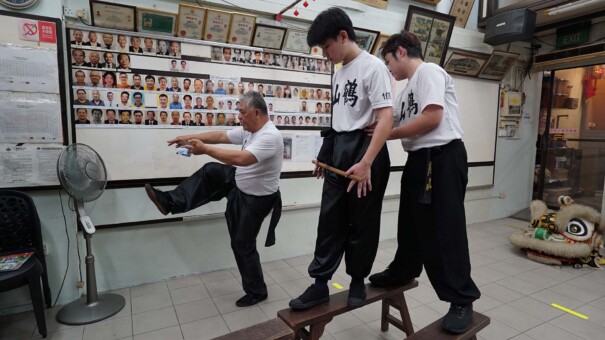
This was perfectly demonstrated when Jordan and Keith initially struggled with a challenging lift. Jordan had to lift Keith up safely on a bench. They tried numerous times, even almost falling a few times. Still, the senior members encouraged them to push harder and go higher.
I felt their stress from watching those repeated unsuccessful attempts, even as a spectator. Imagine the sense of achievement when they managed to pull off the stunt perfectly. From the looks of the elders afterwards, they’d never doubted Jordan and Keith for a second.
(Video Source: Singapore Hok San Association Facebook)
Jordan and Keith had similar stories about how and why they joined Hok San. Their fathers (who are also in the troupe) introduced them to lion dance from a young age by bringing them to regular practices and watching lion dance performances.
Interestingly, when I asked their fathers why they joined the troupe, their answers were almost identical to their sons’. The love for lion dance had been passed down for three generations!
The Performance
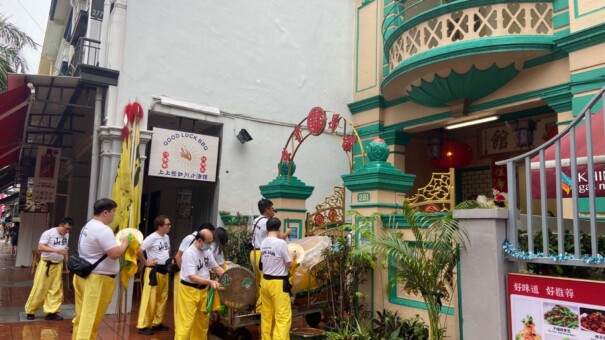
In the troupe, their members come from all walks of life. Their members diligently make time to socialise, practise and contribute to performances.
Based on their individual skill sets, they will find ways to help out the troupe, including working behind the scenes in administrative positions or even helping to repair and maintain the lion costumes and instruments!
Before the performance, I also noticed a group of elderly sitting together and chatting at the association with coffee and tea. It turns out that they are senior members of the association, and they come along with the troupe to watch their performance, helping to make sure that everyone is safe, especially if they are walking on the road.
I now understood why Jordan referred to the troupe as a second family. Everyone looks out for one another.
Never Too Young to Start
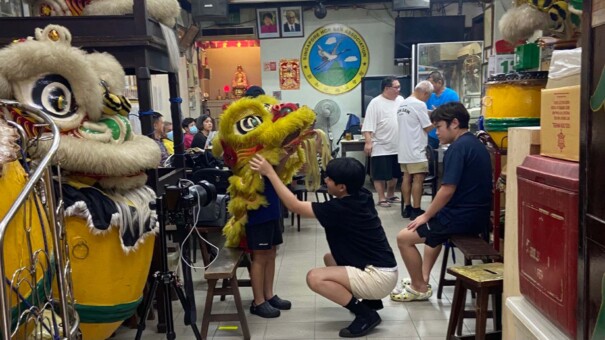
That day, I also met a nine-year-old member of the troupe with her own tiny lion costume, performing alongside the much bigger ones. She was so adorable! After the performance, I found out that she joined a year ago, after watching a lion dance performance at school and developed an interest in it.
Her mother googled for places that could help her cultivate her interest but was unable to find any suitable place to learn. She found Hok San a conducive environment for her and was happy that they accepted her as a member. She could start from watching the practice to playing the drums and eventually trying out with a mini lion head and costume.
Like Jordan told me, “If you come here, there is always someone willing to teach you and who will be up for the challenge anytime!”
Symbolic Value
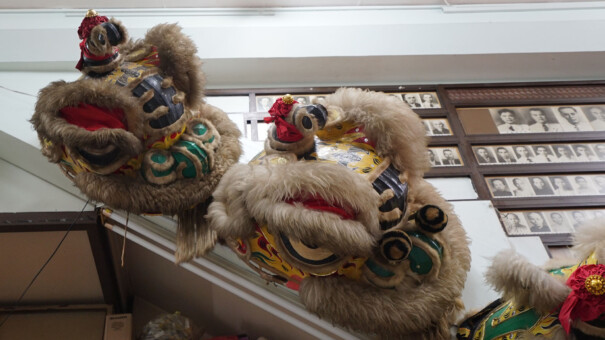
The opportunity to be behind the scenes increased my respect for the members involved and rekindled my fascination with this traditional performing art. If you ever pass by them having one of their practice sessions at 21 Kreta Ayer Road, do not hesitate to come in and take a look! Everyone is very friendly and welcoming. They will be more than willing to answer any questions you may have.
Lion Dance plays a multifaceted role in Singaporean society. It serves as a cultural touchstone and contributes to the artistic landscape, community cohesion, and the broader narrative of Singapore’s multicultural identity.
If you chance upon a lion dance performance this Chinese New Year, do take a moment and immerse yourself in the lion’s rhythmic beats and intriguing movements. I believe watching the vibrant and energetic dance can foster a sense of unity and togetherness among the audience.
I truly hope its historical significance and aspects of culture are not forgotten over time.